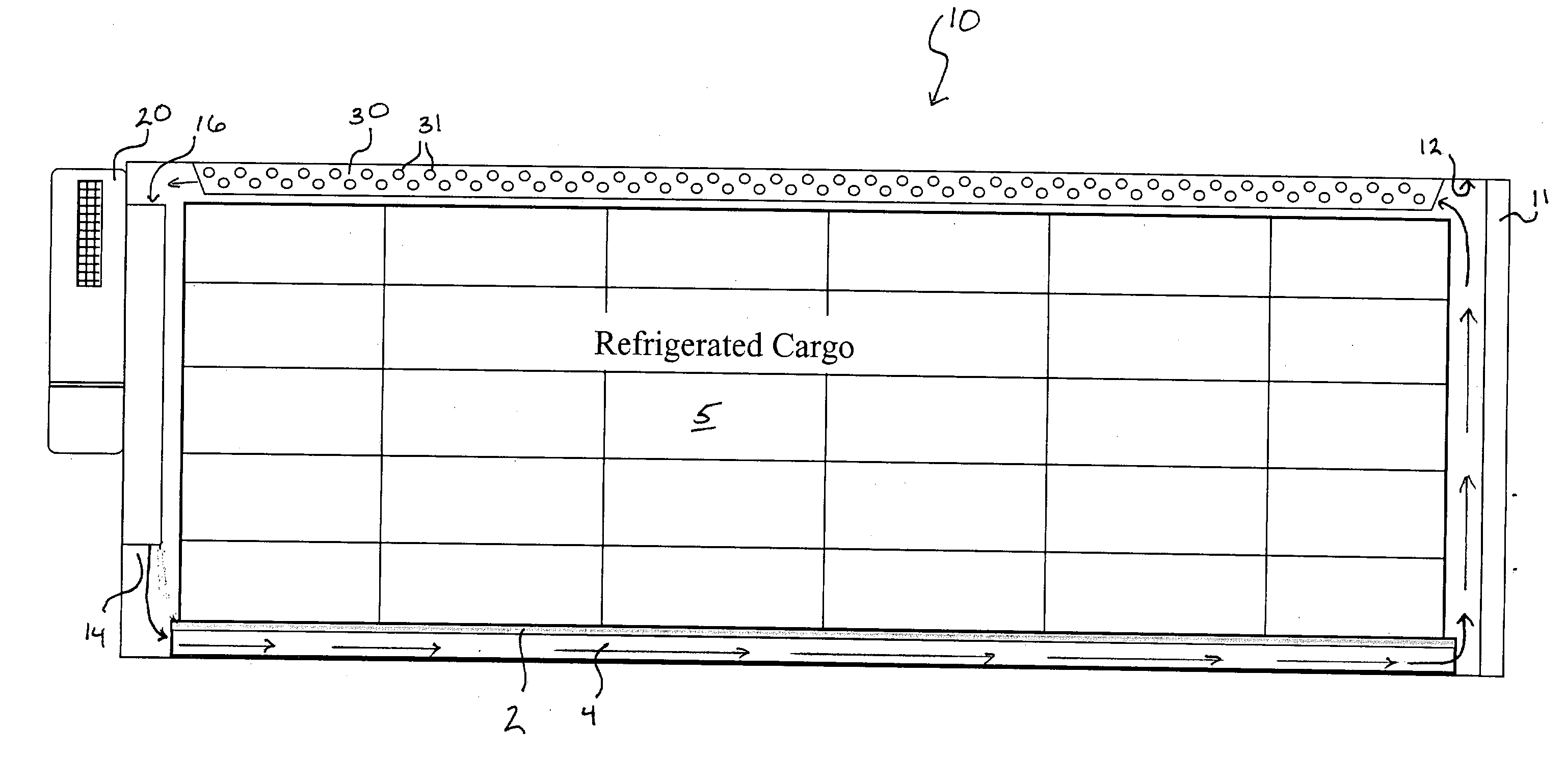Bimodal refrigeration system and method
a refrigeration system and bimodal technology, applied in the field of refrigeration systems, can solve the problems of reducing the thermal exchange efficiency between the refrigerant and the cargo chamber, affecting the safety of the cargo,
- Summary
- Abstract
- Description
- Claims
- Application Information
AI Technical Summary
Problems solved by technology
Method used
Image
Examples
Embodiment Construction
[0019] This invention is described in a preferred embodiment in the following description with reference to the figures. While this invention is described in terms of the best mode for achieving this invention's objectives, it will be appreciated by those skilled in the art that variations may be accomplished in view of these teachings without deviating from the spirit or scope of the present invention. In particular, although described primarily in relation to transportable containers, the present invention is applicable in alternate embodiments to stationary cold storage rooms or buildings.
[0020] The bimodal refrigeration system of the present invention employs an endothermic storage material within a refrigerated container in a manner that leverages the features of conventional mechanical refrigeration units, particularly mechanical refrigeration units employing forced-air chilling. In conjunction with the "active" heat exchange mode provided by the forced-air mechanical refriger...
PUM
 Login to View More
Login to View More Abstract
Description
Claims
Application Information
 Login to View More
Login to View More - R&D
- Intellectual Property
- Life Sciences
- Materials
- Tech Scout
- Unparalleled Data Quality
- Higher Quality Content
- 60% Fewer Hallucinations
Browse by: Latest US Patents, China's latest patents, Technical Efficacy Thesaurus, Application Domain, Technology Topic, Popular Technical Reports.
© 2025 PatSnap. All rights reserved.Legal|Privacy policy|Modern Slavery Act Transparency Statement|Sitemap|About US| Contact US: help@patsnap.com



